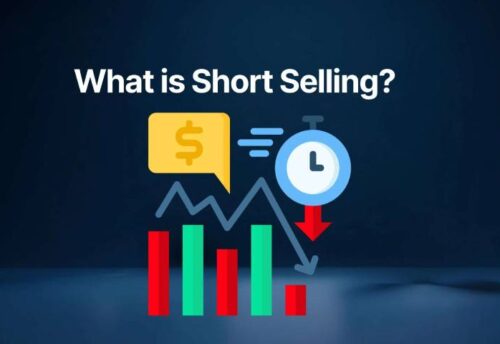
- 10/09/2025
- MyFinanceGyan
- 538 Views
- 4 Likes
- Investment, Share Market
Algorithmic & Automated Trading for Intraday: A Complete Guide
Intraday trading has gained immense popularity among traders due to its potential for quick profits by taking advantage of short-term price movements within a single trading day. With advancements in technology, algorithmic & automated trading systems have reshaped how intraday trading is executed. These systems allow trades to be carried out with remarkable speed, accuracy, and efficiency—far beyond human capability. This guide explores the fundamentals of algorithmic & automated intraday trading, the most widely used strategies, benefits, challenges, and best practices for success.
What is Algorithmic & Automated Trading?
- Algorithmic Trading: The use of pre-programmed, rule-based algorithms to automatically execute trades. These algorithms analyze real-time market data and place buy or sell orders when specified conditions—such as price, volume, or technical indicators—are met.
- Automated Trading: A more advanced form, where the entire trading process is fully automated. Once a trading opportunity is identified by the algorithm, orders are executed instantly without human involvement. This level of automation is particularly valuable in intraday trading, where milliseconds can make a difference.
Why Algorithmic Trading Fits Intraday Trading:
Intraday trading thrives on volatility and multiple trade opportunities within a day. Algorithmic systems are especially suited for this style because they offer:
- Unmatched Speed: Algorithms process data and execute trades in microseconds.
- Emotion-Free Decisions: Rules-based systems eliminate human bias caused by fear or greed.
- Consistency: Trades are executed exactly as programmed, without lapses in discipline.
- Multi-Asset Coverage: Algorithms can scan and trade several instruments simultaneously.
- Backtesting Capabilities: Strategies can be tested on historical data before real-world deployment.
Popular Algorithmic Strategies for Intraday:
- Mean Reversion: Based on the belief that prices revert to their historical average. For instance, if a stock price rises too far above its average, the algorithm may trigger a short position, anticipating a pullback.
- Momentum & Trend Following: These strategies capitalize on stocks showing strong upward or downward momentum. The algorithm follows the trend until signs of reversal appear.
- Arbitrage: Exploits price discrepancies of the same asset across different markets or exchanges. The algorithm buys low in one market and sells high in another, locking in risk-free profits.
- Market Making: Continuously places buy (bid) and sell (ask) orders to profit from the bid-ask spread, while also adding liquidity to the market.
- High-Frequency Trading (HFT): Involves executing thousands of trades within seconds to capture tiny price movements. Requires advanced infrastructure and is usually practiced by large firms.
- Machine Learning & AI-Based Models: Uses AI to analyze complex market patterns and adapt strategies in real time, making them more dynamic than rule-based systems.
Tools and Technologies for Intraday Algorithmic Trading:
- Programming Languages: Python, R, C++, and Java are the most popular choices.
- Trading Platforms & APIs: Broker APIs connect algorithms directly to markets.
- Backtesting Engines: Allow simulation of strategies using historical data.
- Real-Time Data Feeds: Essential for accurate, timely execution.
- Order Management Systems (OMS): Help monitor, manage, and control trades.
- Cloud Computing: Provides scalable infrastructure for fast data processing.
Steps to Build an Algorithmic Intraday Trading System:
- Define Strategy Rules: Establish entry/exit signals using price, volume, or indicators.
- Collect and Clean Data: Use high-quality historical data for accurate testing.
- Backtest and Optimize: Run simulations, factoring in costs and slippage.
- Risk Management: Incorporate stop-loss, position sizing, and capital limits.
- Go Live: Deploy in real-time markets with monitoring tools in place.
- Continuous Refinement: Adjust and enhance strategies as market conditions evolve.
Benefits of Algorithmic Trading for Intraday:
- Lightning-fast execution with precision.
- Ability to track multiple assets simultaneously.
- Reduced human errors in order placement.
- Emotional detachment from trading decisions.
- Consistent and disciplined execution.
- Systems can operate 24/7 without fatigue.
Challenges and Risks:
- Technology Reliance: System bugs, connectivity issues, or server downtime can cause losses.
- Overfitting: Over-optimized strategies may fail in live conditions.
- Slippage & Market Impact: Large orders may influence prices.
- Regulatory Requirements: Compliance with trading rules is critical.
- High Complexity & Cost: Requires advanced coding skills and infrastructure.
Best Practices for Success:
- Begin with simple, well-tested strategies.
- Use realistic backtesting that includes trading costs.
- Apply strict risk management controls.
- Monitor live trades continuously.
- Stay updated on market, technology, and regulatory changes.
- Use professional trading platforms for better reliability and support.
Conclusion:
Algorithmic & automated trading has become a cornerstone of intraday trading. By enabling traders to act with speed, accuracy, and discipline, these systems open the door to consistent profitability in fast-moving markets. From traditional strategies like mean reversion and arbitrage to advanced AI-powered models, the possibilities continue to expand. However, success in this space requires more than just technology—it demands market knowledge, programming expertise, robust testing, and disciplined risk management. As markets evolve, traders who combine these elements with automation will be best positioned to capitalize on intraday opportunities.
Disclaimer: The views expressed in this article are personal and intended purely for educational purposes. They are not financial advice or product recommendations.



